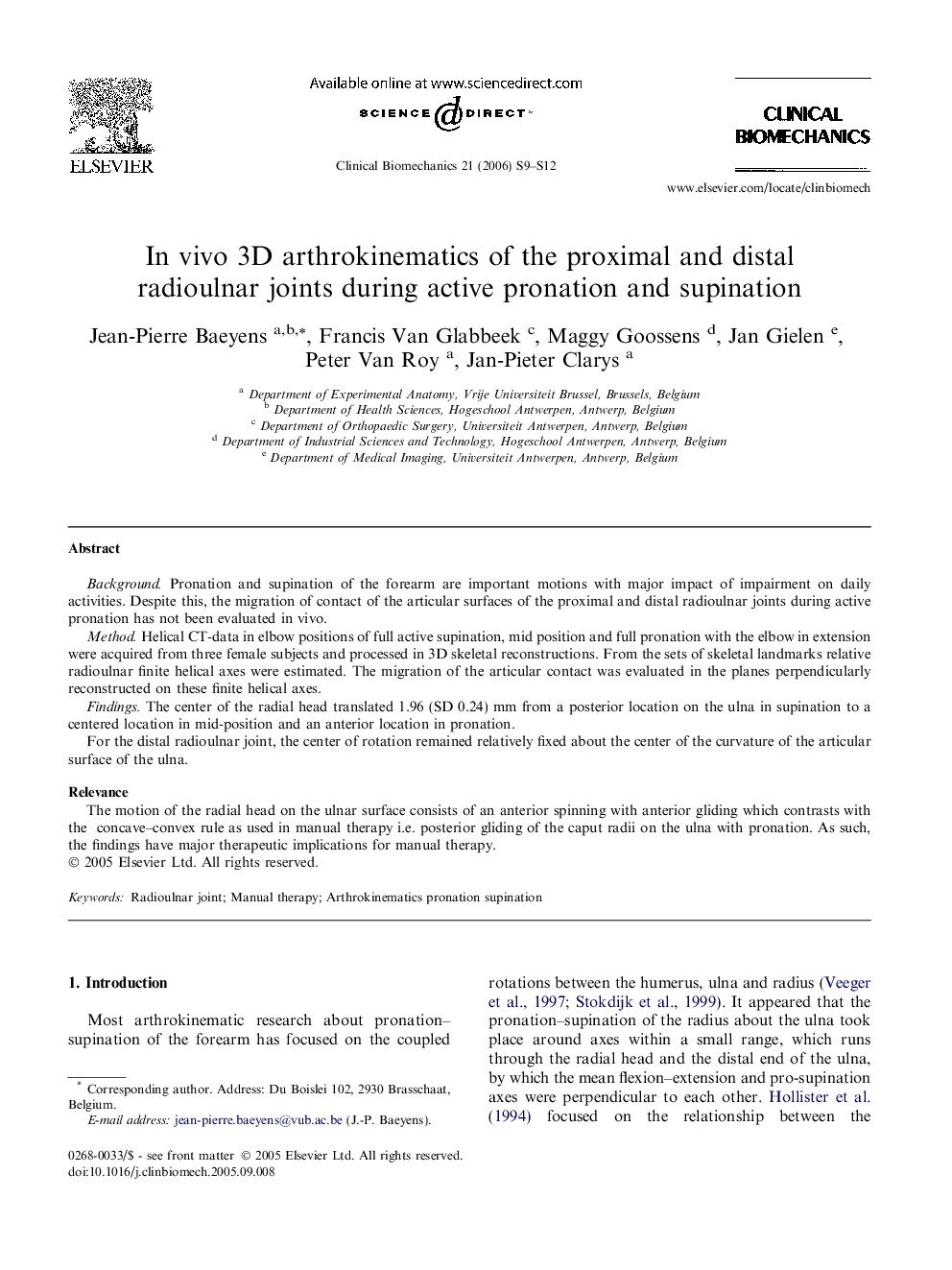| Article ID | Journal | Published Year | Pages | File Type |
|---|---|---|---|---|
| 4051615 | Clinical Biomechanics | 2006 | 4 Pages |
Background. Pronation and supination of the forearm are important motions with major impact of impairment on daily activities. Despite this, the migration of contact of the articular surfaces of the proximal and distal radioulnar joints during active pronation has not been evaluated in vivo.Method. Helical CT-data in elbow positions of full active supination, mid position and full pronation with the elbow in extension were acquired from three female subjects and processed in 3D skeletal reconstructions. From the sets of skeletal landmarks relative radioulnar finite helical axes were estimated. The migration of the articular contact was evaluated in the planes perpendicularly reconstructed on these finite helical axes.Findings. The center of the radial head translated 1.96 (SD 0.24) mm from a posterior location on the ulna in supination to a centered location in mid-position and an anterior location in pronation.For the distal radioulnar joint, the center of rotation remained relatively fixed about the center of the curvature of the articular surface of the ulna.RelevanceThe motion of the radial head on the ulnar surface consists of an anterior spinning with anterior gliding which contrasts with the concave–convex rule as used in manual therapy i.e. posterior gliding of the caput radii on the ulna with pronation. As such, the findings have major therapeutic implications for manual therapy.
